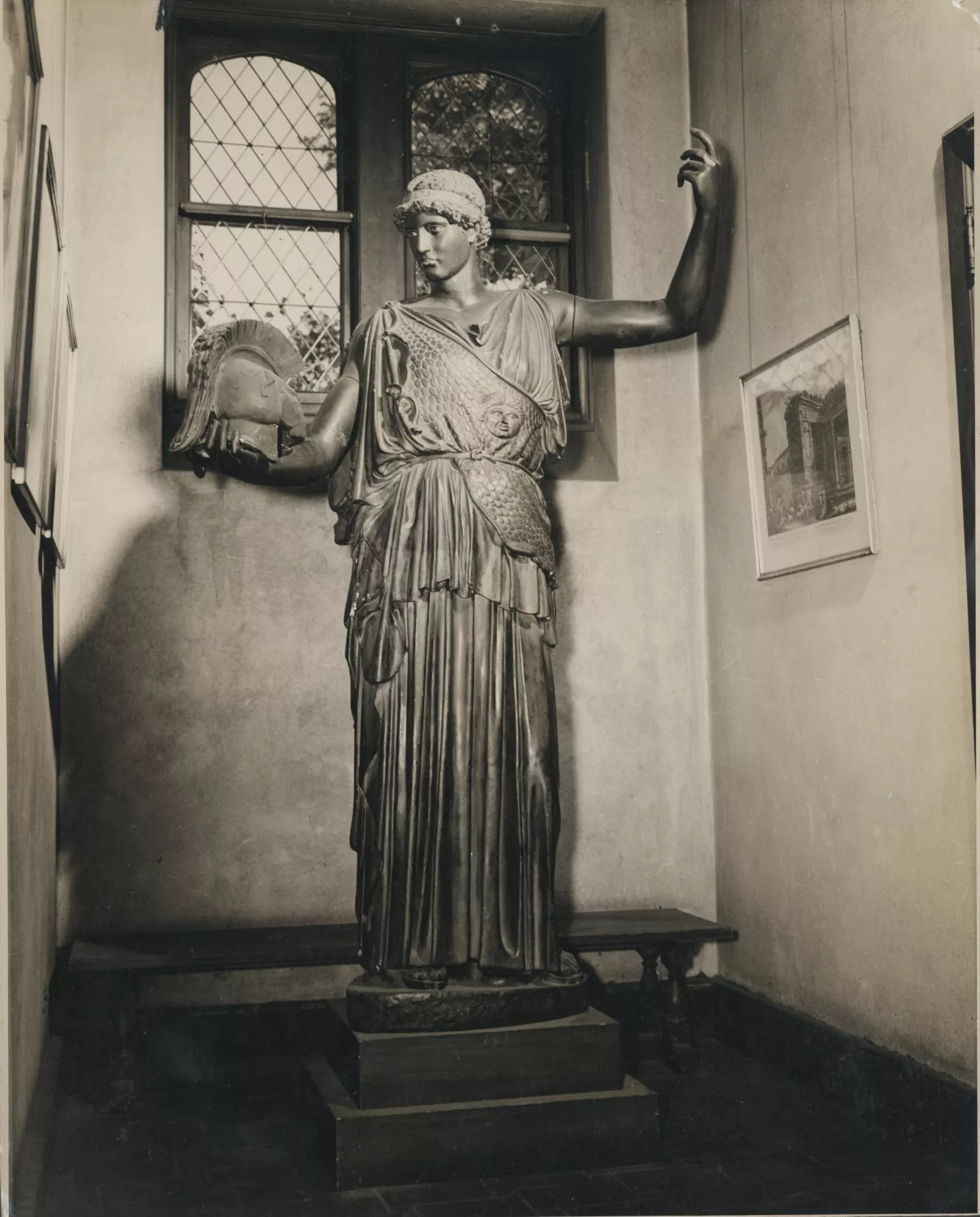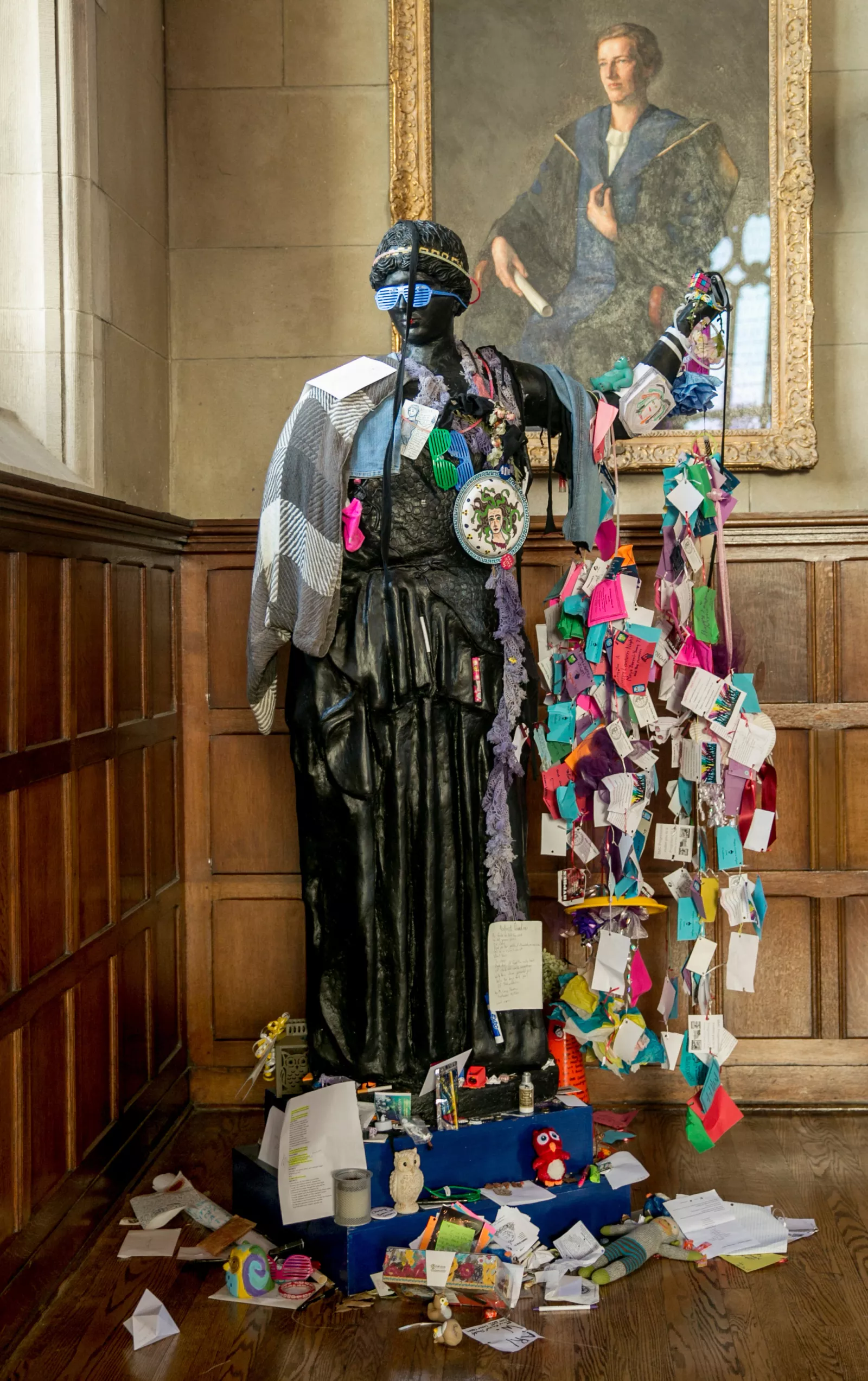On April 21, 1996, in the middle of the night, five Haverford students nabbed 200-pound Athena Lemnia* from the corner of Thomas Great Hall and shoved her into the back of a white Ford Escort station wagon, breaking off her head and one arm in the process. A Bryn Mawr student coming back from a sailing meet spied Athena’s feet sticking out of the tailgate, and a pursuit followed. The goddess was returned, but in such condition that she was confined to a storage room to await restoration.
The timing was unfortunate: exam week was closing in on the Mawrters. For decades, students had been adorning the statue with food, flowers, jewelry, notes, poems, and gifts to persuade Athena to help get them through finals. Yet it would be months before Athena was repaired enough to withstand moving, and even then, she would not take her usual place in Thomas, since she remained ever fragile (penitent ‘Fords helped fund the conservation costs). Instead, she was installed in a niche in Rhys Carpenter Library, out of reach to students’ offerings.
Into the breach stepped Jan Trembley ’75. A classics major, Trembley had studied Greek sculpture and the particulars of Bryn Mawr’s Athena. Also an artist, Trembley volunteered to create a new statue out of papier mache.
“It was my mother’s idea to make the initial shell in two halves to fit around a base,” wrote Trembley for an article in the Alumnae Bulletin. “My father instructed me in the odorous work of fiberglassing and built the wooden armature. When my scheme to fill the body with expanding insulation foam resulted mostly in blobs congealed to my forelocks, they shopped for packing peanuts.”
Once completed, Athena was a 7-foot 6-inch sculpture of “plaster gauze, papier maché, fiberglass resin, foam peanuts, floral wire, electrician’s tape, real cat hair, wood and string.
“Almost exactly a year after the abduction,” Trembley wrote, “we unveiled Athena II in Thomas Great Hall to a crowd of cheering students. That evening, shaking off the all-nighter, caffeine-crazed exhilaration of finishing the project, I came back alone to have another look. Her head, which I had attached at 2 a.m., was off center; her arm was lumpy; and she had spread broader in the beam while lying on the floor of my garage.
“I joked to anyone who would listen that I worried about being struck down, if not by Athena’s spear, then by the scorn of a certain professor who specializes in Greek sculpture.”
Painted black to represent bronze, the statue was quickly decorated with red glitter lips, handmade wreaths for her akiltered head, flowers, textbooks, candy, aspirin, and a Hello Kitty mirror.
*A late 19th- to early 20th-century plaster cast after marble copies of the original bronze sculpture attributed to Phidias, c. 490–430.

